Human-wildlife conflict is a shockingly common problem, often with enormous consequences for both individual animals and entire populations.
When human-wildlife conflict comes to mind, you may immediately think of wildlife crime instead - which isn't wrong, since many regions with wildlife crime problems like poaching are also areas where people may frequently deal with human-wildlife conflict, causing the two issues to go hand-in-hand. But human-wildlife conflict is a much broader issue encompassing many ways that human presence and interference can cause problems for us and animals alike. Human-wildlife conflict includes:
- Elephants trampling a farmer's crops, resulting in retaliation
- New real estate developments infringing on ecosystems where predator species live, leading to predators having less territory and less food, which in turn leads to predators attacking domestic animals and livestock
- Freeways dividing the territory of animals like mountain lions, leading to wildlife venturing into neighborhoods or being killed by cars
- Lead bullets used in hunting causing scavengers like condors to die of lead poisoning
These are just a few examples of how humans can negatively impact wildlife, and it's clear to see how many of these scenarios could escalate. Human-wildlife conflict solutions don't just include ways in which we can prevent these issues (for example, through tracking predators, monitoring populations' territories, or building barriers and wildlife crossings monitored by sensors), but also the ways in which we can help people connect with wildlife and care about learning to live alongside them.
If you're interested in solutions that can prevent human-wildlife conflict, join this group and get to know the people who are working to protect and save species around the world!
Header image: Casey Allen on Unsplash
- @jmasseloux
- | She/Her
Programme Coordinator and M&E Specialist at ZSL Thailand

- 0 Resources
- 3 Discussions
- 2 Groups
- 0 Resources
- 0 Discussions
- 10 Groups
- @emilyhuston
- | she/her/hers
Hi! I am currently pursuing a masters degree in wildlife conservation and management, and I am looking to gain more information and form connections with people who are interested in all the same things :)
- 0 Resources
- 0 Discussions
- 6 Groups
- @GrecoBobby
- | He/Him
PhD Student Clemson University. Investigating applied management techniques in crocodilians
- 0 Resources
- 0 Discussions
- 4 Groups
Conservation Director, Texas with National Audubon Society
- 0 Resources
- 4 Discussions
- 3 Groups
Margo Supplies - Wildlife Technology



- 0 Resources
- 39 Discussions
- 3 Groups
MSc student in wildlife management and conservation


- 0 Resources
- 2 Discussions
- 12 Groups
Zoological Society London (ZSL)
Technical Project Manager in ZSL's Conservation Technology Unit



- 2 Resources
- 26 Discussions
- 7 Groups
Universidad San Francisco de Quito
Biologist/Professor focusing on carnivore conservation in Ecuador
- 0 Resources
- 0 Discussions
- 12 Groups
- 0 Resources
- 0 Discussions
- 6 Groups
- @Phillip_Swart
- | He
I'm a conservationist working in the Vulture conservation space in South Africa with a huge passion for technology.
- 0 Resources
- 0 Discussions
- 18 Groups
Kulani Nyakane is a passionate and experienced nature conservation professional with over 10 years of expertise in wildlife conservation and community-based natural resource management. Am also a National Geographic Explorer.
- 0 Resources
- 0 Discussions
- 3 Groups
The winners of our Human Wildlife Conflict Tech Challenge are offering regular updates throughout the year to chronicle their failures, successes and what they learn along the way as they develop their solutions. In...
27 July 2018
As people continue to move into natural habitats, conflicts between human beings and wildlife continue to rise. Although there are a number of early-detection systems and tools in place to prevent human-wildlife...
5 June 2018
Conflict between humans and wildlife is increasing as human communities expand and wild habitats are destroyed, prompting need for new mitigation techniques. As a winner of the Human Wildlife Conflict Tech Challenge,...
19 April 2018
‘The Field’… Say the words ‘The Field’ to a group of conservationists and it will immediately conjure up vivid memories of everything from sticky wet rainforests to burning dusty deserts. What’s more, it’s almost...
17 January 2018
Article
A new research project is looking to investigate whether technology combined with the ancient skills and knowledge of Namibian trackers can help save cheetahs from extinction. Called FIT Cheetahs, the research project...
4 December 2017
We are delighted to announce that British conservation technologist Alasdair Davies and the Dutch team of Laurens de Groot and Tim van Dam from the ShadowView Foundation are the winners of the first international Human...
1 November 2017
Our panel of international experts has been hard at work reviewing the 47 proposals we recieved for innovative technological tools to address human wildlife conflict. The panelists have systematically been assessing the...
20 October 2017
The inherent complexity of not only deploying technologies in the field but also doing so in a scientifically rigorous manner can prove a substantial barrier for the effective use of conservation technologies, and clear...
11 October 2017
The Domain Awareness System (DAS) is a revolution in monitoring technology, creating real-time awareness of protected areas assets. This technology has the potential to completely change standard monitoring procedures...
26 September 2017
Article
Human-wildlife conflict can be difficult to understand without knowing its impact on people and communities. In this case study, authored by community member and Human Wildlife Conflict Tech Challenge coordinator Femke...
19 September 2017
Earlier this year, WILDLABS community member Shashank Srinivasan was involved in an operation to capture the Pilibhit man-eater. In this account, he shares how they successfully managed to tranquilize and capture the...
10 August 2017
Frustrated by the limitations of the tools that were available for managing large camera trap data sets, Heidi Hendry and Chris Mann set out to develop something that met their needs, and thus, Camelot was born. In...
7 July 2017
June 2025
event
July 2025
October 2025
event
September 2024
event
32 Products
3 R&D Projects
40 Organisations
Recently updated products
Recently updated R&D Projects
Recently updated organisations
| Description | Activity | Replies | Groups | Updated |
|---|---|---|---|---|
| Hello, this device looks really interesting...has anyone tryed? what brand is it? how much does it cost? what's the range of the speakers? what kind of sound does it makes? I... |
|
Human-Wildlife Conflict | 7 years 8 months ago | |
| Hi Mark and Teun, we have been investigating this technology also. It is already being used, but has two problems. First, their reach is often very limited (around 50m) and the... |
+13
|
Human-Wildlife Conflict | 7 years 8 months ago | |
| Dear Somak, Thank you very much for writing and we are sorry information on the challenge did not reach you in time. We are certainly interested in furthering discussions... |
+14
|
Human-Wildlife Conflict | 7 years 8 months ago | |
| Hi Gwen, That's a tough question Gwen! And for any destination in the Arctic counts: it is horribly expensive! I suggest you count on Iqaluit in Nunavut-Canada. Access is... |
+12
|
Human-Wildlife Conflict | 7 years 8 months ago | |
| Thank you, Gert. My proposed solution takes security into account heavily. Excited to share it with you and the panel as well. Claire |
+7
|
Human-Wildlife Conflict | 7 years 8 months ago | |
| Additional information on human-polar bear conflicts can be found in this article |
|
Human-Wildlife Conflict | 7 years 9 months ago | |
| Friends and fellow researchers in the WILDLABS community I would like to hear your valuable opinions on the doctoral research project I am... |
|
Human-Wildlife Conflict, Funding and Finance | 7 years 10 months ago | |
| For those interested: in the acoustics channel I have posted news on our sound event recognition sensor, using conv-net: https://... |
|
Human-Wildlife Conflict | 8 years ago | |
| Hello all! There's going to be a workshop led by Human Wildlife Conflict Collaboration on the fundamentals of HWC. It will... |
|
Human-Wildlife Conflict | 8 years ago | |
| Peter, thanks for your reply and sorry for the dealyed repsonse, I have been ahving some issues getting alerts in my email. I would like to talk to you more about your... |
|
Human-Wildlife Conflict | 8 years 1 month ago | |
| Personally, I'd order a few of the $10 radios from eBay and see how they work. They are cheap enough that if they don't work out, you wouldn't be out much money.... |
+23
|
Human-Wildlife Conflict | 8 years 1 month ago | |
| Hi Udayan, Many thanks for following up and it's great to hear that it's an area of interest for you as well. I'm certainly interested to hear more about the work... |
|
Human-Wildlife Conflict | 8 years 4 months ago |
Fence-Based Elephant Early Warning System
25 February 2020 12:00am
HWC Tech Challenge Update: Thermal Elephant Alert System
17 February 2020 12:00am
A New Cloud Platform Unveils the Most Diverse Camera Trap Database in the World
17 December 2019 12:00am
Mitigate Elephant-Human Conflict with ADSMO
[ARCHIVED] Upcoming Event: International Conference on Human-Wildlife Conflict and Coexistence
4 November 2019 10:54am
AI powered mobile app to save snakes
4 October 2019 7:10am
10 October 2019 1:57pm
Thanks Drue for your valuable input.
This is certainly not to encourage killing venomouse snakes. We can actually incorporate the featurs you pointed out to save venomouse snakes as well. Ideally we can let the user know how to deal with a venomouse snake and whome to contact if he/she needs professional assistance.
Thanks again.
Nilaksha
Trade of body parts
23 August 2019 12:16am
Tech In the Wild: Where technology meets conservation
 Fauna & Flora
Fauna & Flora
22 August 2019 12:00am
Conservation and Technology Conference
 Bat Conservation Trust
Bat Conservation Trust
29 July 2019 12:00am
New technology trialled to better monitor human-gorilla conflict in Uganda
23 July 2019 12:00am
Makerspaces to empower communities to develop/refine their own solutions to HEC
27 May 2019 8:27am
28 May 2019 11:37pm
3 June 2019 3:31pm
Hi Aditya,
If you haven't already found it, you should check out our last virtual meetup, it was all about tools and spaces for collaboration and we featured a number of members who have set up and are working on conservation focused makerspaces. You can watch in and connect to the members featured here.
Steph
Caught in the crossfire – Tapirs in tiger territory
31 May 2019 12:00am
Technology lab focused on wildlife protection opens on Ol Pejeta Conservancy
31 May 2019 12:00am
HWC Tech Challenge: Smart Parks field update
25 March 2019 12:00am
Tech for Rewilding Conflicts
22 November 2018 10:54am
13 March 2019 12:34pm
Hi Laurens,
Would be great to connect. Sent you a mesage directly.
Best,
Vance
14 March 2019 2:48am
Interesting conversation. From Tech side there is solution which we are workign on.... Its low cost and tech heavy. Attaching Idea
Toughts please.
14 March 2019 12:21pm
Cool idea Ashwan. Looks similar to the virtual parks idea that Laurens is leading. Have you seen it? Also check out rewilding.io and get an entry in to the contest!
Arribada Initiative Update: Testing our prototype thermal cameras with elephants in India
1 March 2019 12:00am
Nominations for the 2019 Tusk Conservation Awards Now Open
12 February 2019 12:00am
Foxlight to deter pumas, but how about Andean foxes?
14 January 2019 3:24pm
9 February 2019 6:23pm
I agree Nilanga, definitely a good PhD topic. The case you raise with elephants is of great concern I imagine, as elephants standing their ground leads me to think of only the most dire of outcomes. With predators, I think a good deal of any successful implementation of aversive approaches also relies on their being sufficient alternative prey/habitat for predators to avoid livestock areas. The same is true for any non-lethal approaches IMO. If alternatives aren't available, it might be all the more difficult to dissuade predators. Is this similar for elephants in this case (i.e. do they actually have alternative sites/food sources nearby that aren't in conflict)?
11 February 2019 3:04pm
You are right, Rob, in that when aggressive behavior in elephants results from more aversive techniques, the outcomes are not great for either party. It's a tough spot to be in since elephants are also extremely intelligent and can find ways to get past most deterrents. Electric fencing, when managed properly and are functioning appropriately, have been proven to be the most effective in keeping elephants out of crop of human-inhabited areas. But then again, elephants also figure out how to either drop things on the fence and break the current or find other ways past such barriers. There is work being done in various places to restore habitat,fodder plant species, and water and mineral sources that would keep elephants out of human areas, but the whole dynamic is changing overall in the face of massive habitat loss and impediments to movement in the form of corridor blockage or disruption, etc. In addition to doing reactive things like prevention and mitigation measures, it's so important to work on the drivers/root causes of the conflict, such as habitat loss and fragmentation. So it's key to work at both levels for longer term solutions to this issue overall.
11 February 2019 7:54pm
A very good summary all-round Nilanga. Only a wholistic approach can truly resolve conflict.
Mobile phones to reduce HWC
8 February 2019 2:31pm
Citizen scientists to analyze HWC interventions
16 January 2019 3:11pm
23 January 2019 2:15pm
Hi Femke,
At the Biological records Centre we have been tackling these issues for over 50 years! You are right to point out that with citizen scientists you can collect/review a lot of data in a relativly short period of time. Our iRecord system collect 1 million observations in 2018, and just look at how many people are reviewing images over in the zooniverse (check out snapshot serengeti).
You are also right to point our that without strict protocols, and with varying abilities, the use of citizen scientists can introduce biases, which often leads to the impression citizen science data is of lower quality. There are ways to account for this statistically when you are working on data collected in the field, and for those reviewing images online both the zooniverse and iSpot have systems in place, such as reputation and multiple reviews of a single image to reach consensus.
There is a good report on using citizen science here.
Best,
Tom
23 January 2019 5:10pm
I agree with Tom's comments. A project I work with has used Zooniverse to identify animals in camera trap images, We include a field guide that helps reviewers with making trickier distinctions such as deer versus elk (challenging in partial views with IR images). We require each image to be identified by thirty reviewers before scoring it. That allows us to either be quite confident in an identification or to recognize it requires expert review. We have seen no examples of intentional misidentifications. The biggest problem is coming up with enough images to meet demand--some people will work for hours!
28 January 2019 10:12am
Thanks both for your comments, very interesting indeed! Also great to hear that so many people are eager to get involved in this kind of research and will participate with great enthusiasm.
Bets regards,
Femke
The Ecosulis Rewilding Tech Challenge
14 January 2019 12:00am
HWC Tech Challenge Update: Testing our prototype thermal cameras in the Arctic
9 January 2019 12:00am
31 March 2023 1:24pm
Wild pigs crop damage assessment and movement using GIS and drones
28 December 2018 5:15am
3 January 2019 9:57am
Dear Sdorji,
Thanks for sharing! Are you specifically looking for monitoring methods? In that case, you could probably also find relevant information outside of the HWC group, perhaps in groups focussing on camera trapping, the use of drones etc on the other WILDLABS pages. Do you know about the Bhutanese national HWC strategy? Does this also focus on wild boars? Or is your initiative not connected to that?
Best regards,
Femke
5 January 2019 8:24am
Dear Femke,
I am actually looking for studying the crop damages using drones and also tracking the movements, may be using GPS collars. But I do not actually know about these tools and have not used. So just thought if I can get methods and procedures. It is great that you already know about our national strategy. Yes, I am the core member of Bhutanese national HWC strategy and we have recently completed drafting. I have worked on wild pigs chapter and one strategy there is crop damage assessments and movements study. We are also proposing crop insurance but without a concrete data, there is nothing we can do about crop insurance. So I am thinking to collect basic information such as crop damages and movements of wild pigs.
Locally fabricated electric/solar fencing widely spreading in Bhutan
28 December 2018 5:57am
3 January 2019 9:57am
Dear Sdorji,
Thanks for sharing and your request for suppport from this group! I was thinking that perhaps @Mohan+Raj could share with you some insights from India? He has also developed fences and is involved in the technologies to improve monitoring and maintanance.
Best regards,
Femke
5 January 2019 8:18am
Dear Femke,
Thank you for your email. I hope I can hear from Mohan Raj. Electric fencing is one area where it can play very important role in human wildlife conflict management. In Bhutan, there are now about 3636 km and we are already experiencing some issues such as sustainability, wooden poles, nelgect during off-season, etc. I hope we can learn from each other and see areas for collaboration.
Thanks.
Sangay
How camera traps help reduce tension between farmers and cheetahs in Botswana
2 January 2019 2:31pm
Viral bear video shows how drones threaten wildlife – and what to do about it
22 November 2018 12:00am
WILDLABS Virtual Meetup: Networked Sensors for Security and HWC Prevention
12 November 2018 12:00am
Google AI Impact Challenge
7 November 2018 3:44pm
Working together for wildlife
5 November 2018 6:27pm
6 November 2018 11:39am
E-Shepherd Collars - Anyone working with them?
4 October 2017 2:10pm
4 October 2017 6:22pm
Thanks, I'll check it out!
31 August 2018 9:58am
Hi Fleury,
I like to learn more about this collar. Can you send me some detailed information about it? I like to investigate if it can be an extended sulution to combine this collar with our prowild technology.
Hope to hear from you
16 October 2018 3:30pm
Hello Fleury
I am aware that such a collar has been tested in France to protect sheeps fromm wolves' attacks. I am also looking for some information about it to possibly test it out for jaguars and pumas in South America. It could be relevant to exchange about our respective experience about it.
I am also setting up the ENCOSH project which aims at co-developping the first international exchange platform to promote the sharing of knowledge, skills and experiences about local initiatives worldwide among various stakeholders. You could have a look in the website: encosh.org
Don't hesitate to get back to me about it.
Best
Tommy






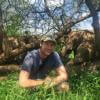




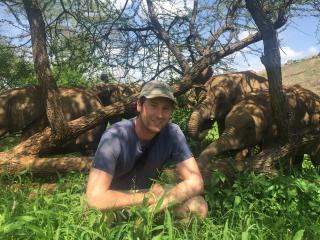






















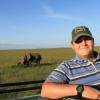
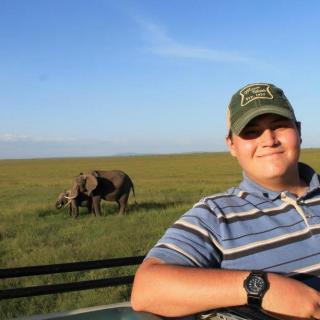











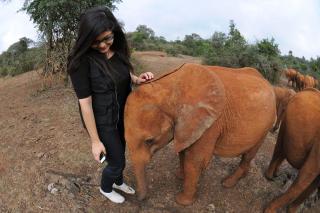





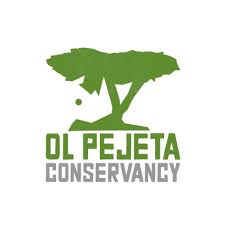
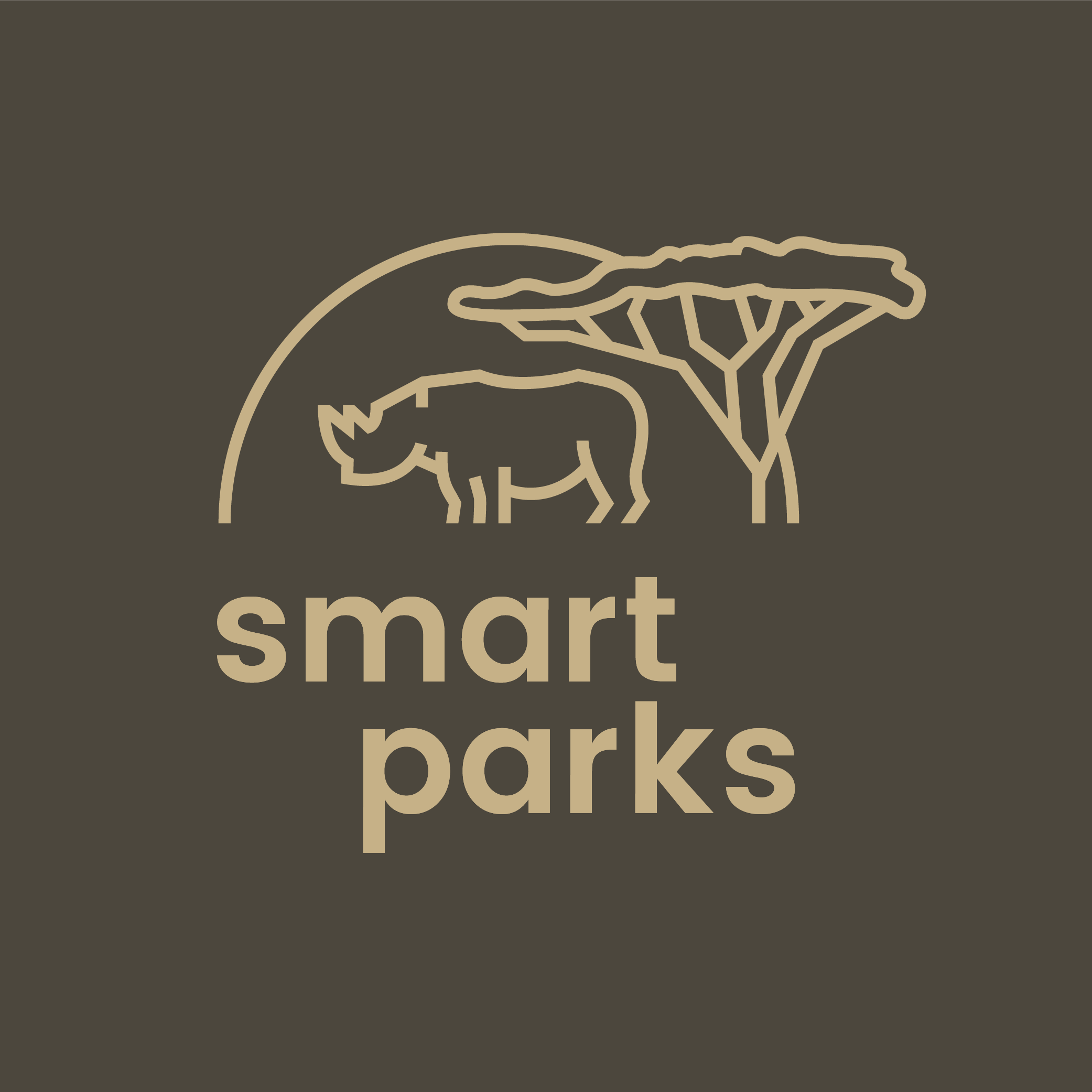



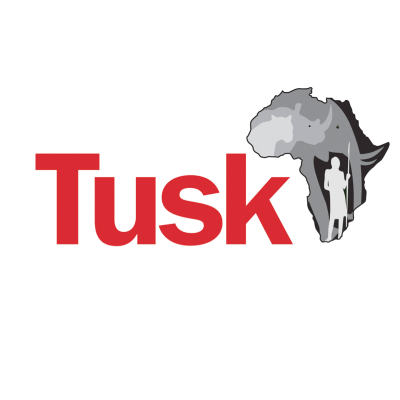









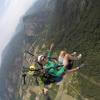

9 October 2019 8:45pm
Hi Nilaksha,
Interesting idea. My ideas are usually not that helpful, but I thought I would chime in with the following:
(1) Start small and local, this will help reduce the size of the training data set you will need. So if you can work with a specific set of communities in a particular area that has a known set of snake species, both venemous and non-venemous, you only need images for those species and you won't need as many.
(2) iNaturalist has a pretty decent database (not thousands, but hundreds) of identified images. I have no idea what the restrictions would be around getting access to the database, but this is a Citizen Science organization, so I don't THINK it should be too complicated, especially if your initial scope is limited.
(3) Venemous snakes need "love" too. PLEASE make sure the app does not encourage the locals to kill the venemous snakes unless absolutely necessary. While it is admirable to prevent the accidental killing of a non-venemous snake, you shoudl not be encouraging the purposeful killing of the venemous snakes, but should be encouraging people to stay clear if the snake is in the wild and get professional assistance if the snake somewhere that could be dangerous to humans or other animals.
(4) Look into organizations like the Rainforest Aliance, OpenAI, etc., which are non-profits doing work in or with AI, they might be able to help give you a leg up.
(5) If you start local, you could build into the app the contact information for the professionals to come in and deal with the dangerous snakes.
Hopefully some of this is useful.
Good luck,
Drue